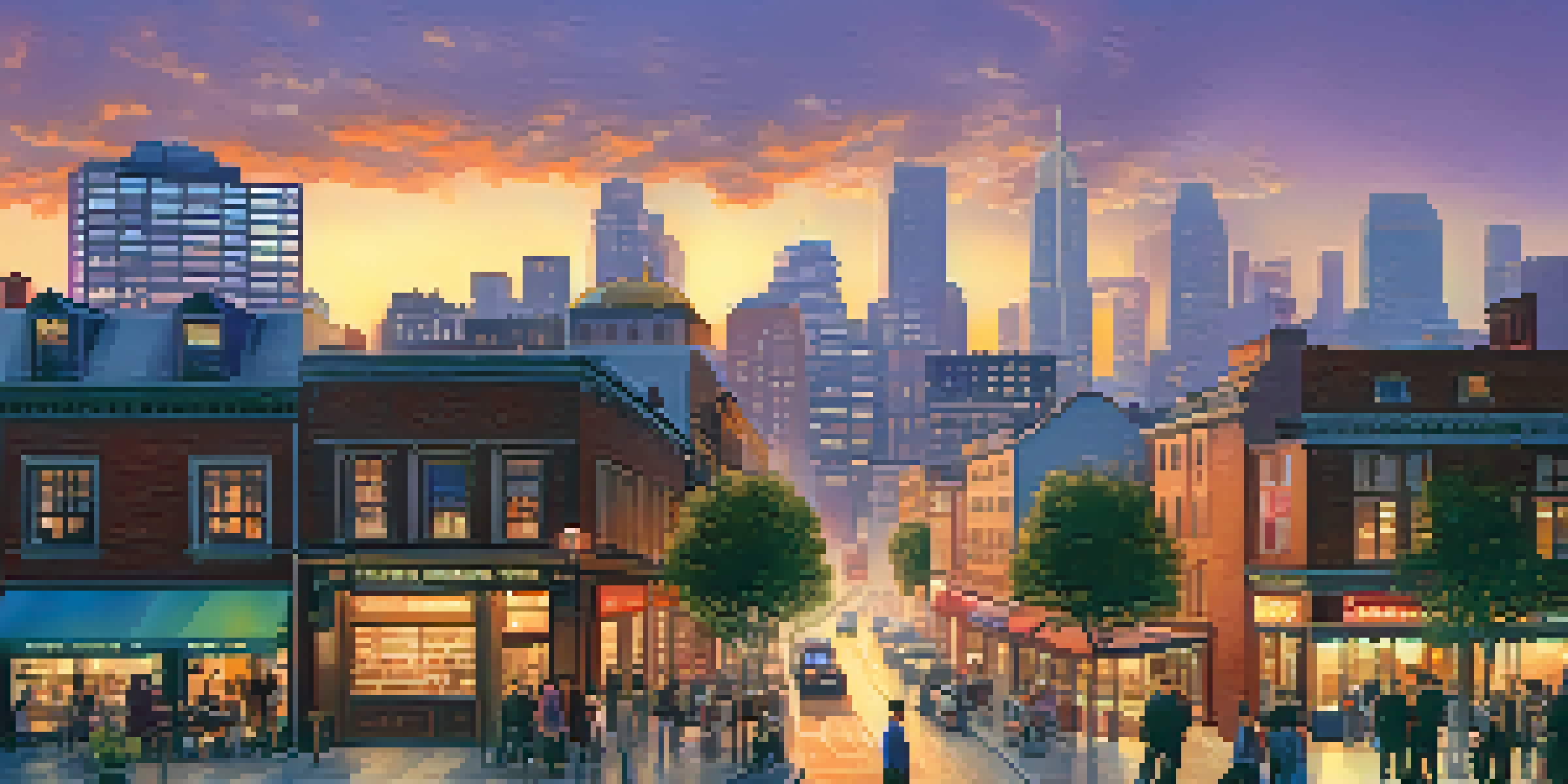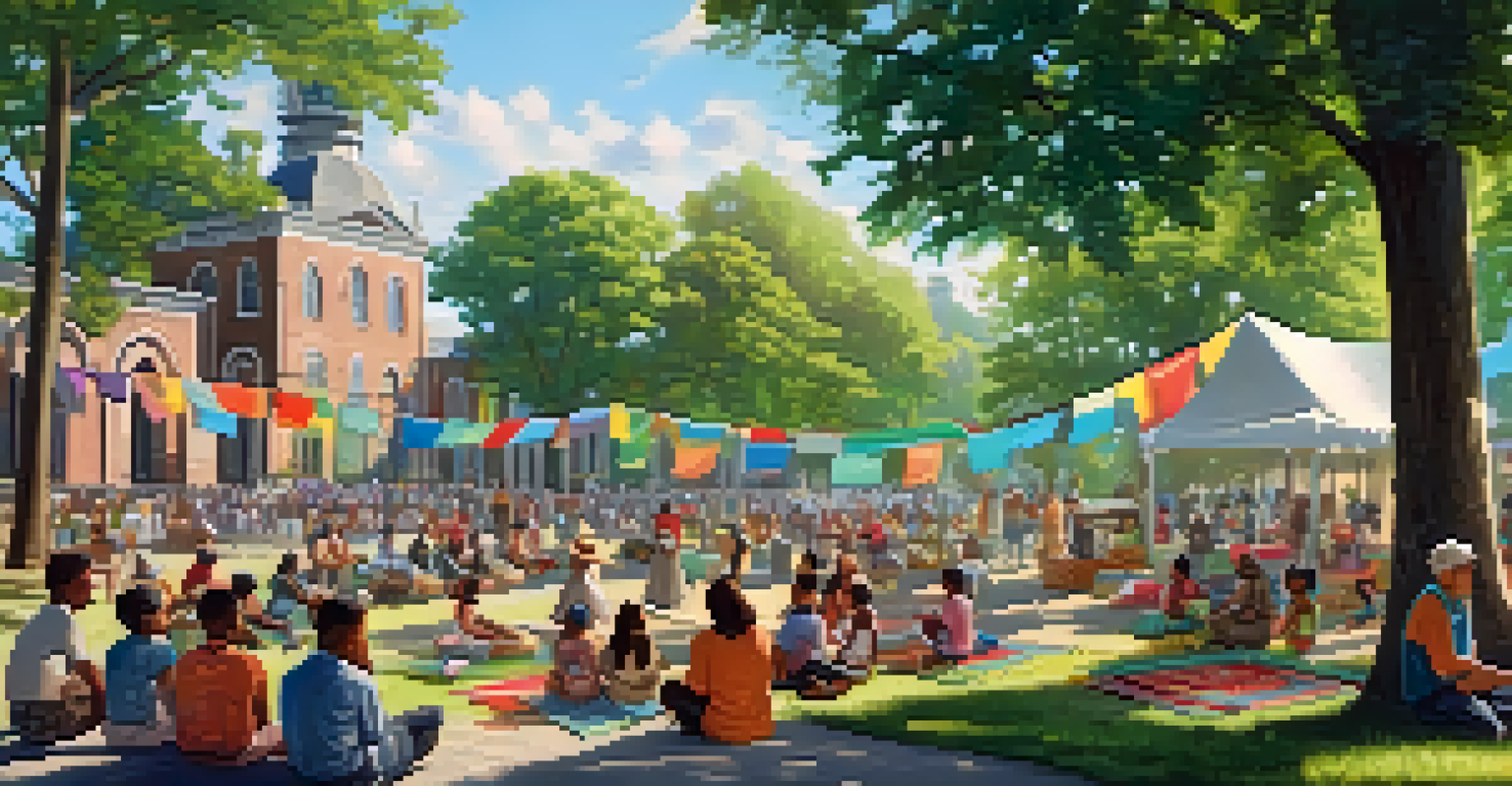The Impact of Urban Development on Cultural Heritage Sites

Understanding Cultural Heritage Sites and Their Importance
Cultural heritage sites are places that hold historical, artistic, or cultural significance. They can range from ancient ruins and monuments to historic neighborhoods and buildings. These sites tell the story of a community's identity and values, connecting us with our past.
Heritage is our legacy from the past, what we live with today, and what we pass on to future generations.
Preserving these sites is crucial, not just for historical knowledge but also for cultural continuity. They often attract tourism, which can be vital for local economies. However, the importance of these sites goes beyond economics; they serve as a reminder of our shared history and collective memory.
As urban areas expand, the challenge becomes balancing development with preservation. Communities must consider how to protect these valuable sites while accommodating growth, prompting discussions about sustainable urban planning and heritage conservation.
Urban Development: A Double-Edged Sword
Urban development can bring modernization and economic growth, but it often comes at a cost. New construction projects, roads, and infrastructure can encroach on or even demolish cultural heritage sites. This creates tension between the need for progress and the desire to preserve history.

For instance, in cities like Istanbul, rapid urbanization has led to the destruction of historic neighborhoods in the name of development. This not only erases local culture but also alienates residents who feel disconnected from their heritage. The loss of these sites can lead to a diminished sense of identity within the community.
Cultural Sites Connect Us to History
Cultural heritage sites are vital as they embody the identity and values of communities, linking us to our shared past.
However, it’s not all doom and gloom. Thoughtful urban planning can integrate new development while respecting and highlighting cultural heritage. This calls for collaboration among urban planners, architects, and historians to create spaces that honor the past while embracing the future.
Case Studies: Success Stories and Cautionary Tales
Looking at cities like Barcelona, we see successful integration of urban development and cultural preservation. Barcelona's commitment to maintaining its architectural heritage has resulted in a vibrant city that respects its past while thriving in the present. The city’s famous Gothic Quarter is a prime example of this balance.
Preservation of our heritage is not a luxury, but a necessity for our future.
In contrast, cities like Cairo have faced significant challenges. Rapid urbanization has led to the neglect and deterioration of historic sites, such as the ancient city of Fustat. The loss of these sites not only affects tourism but also the cultural fabric of the community, highlighting the need for better management strategies.
These examples illustrate that while urban development can threaten cultural heritage, it also offers opportunities for innovation and revitalization. By learning from both successes and failures, cities can develop frameworks that prioritize heritage conservation alongside growth.
Community Involvement: Key to Preservation
Community engagement is crucial when it comes to preserving cultural heritage sites amidst urban development. Local residents often have deep connections to these sites, and their input can guide preservation efforts. Involving the community fosters a sense of ownership and responsibility towards their heritage.
For example, grassroots organizations in cities like New Orleans have successfully rallied community support to protect historic neighborhoods from encroaching development. These initiatives demonstrate how passionate residents can influence policy and advocate for heritage conservation.
Urban Growth Threatens Heritage
While urban development can enhance economic growth, it often jeopardizes the preservation of cultural heritage sites.
By prioritizing community voices, cities can create development plans that respect cultural heritage. This collaborative approach not only safeguards the past but also builds a stronger, more cohesive community for the future.
Technological Innovations in Heritage Preservation
Advancements in technology are playing a pivotal role in preserving cultural heritage sites. Techniques like 3D scanning and digital modeling allow for detailed documentation of sites before they are altered or demolished. This digital preservation can serve as a valuable resource for future generations.
Moreover, augmented reality (AR) offers exciting possibilities for enhancing visitor experiences at heritage sites. By using AR, cities can provide immersive tours that educate visitors about the historical significance of a site, creating a deeper appreciation for cultural heritage.
These technological innovations can bridge the gap between urban development and heritage preservation. They allow for a proactive approach, ensuring that even as cities evolve, their cultural landmarks remain respected and appreciated.
The Role of Policy in Balancing Development and Heritage
Government policies play a crucial role in balancing urban development with the preservation of cultural heritage sites. Legislation that protects these sites can help mitigate the negative impacts of development. However, enforcement and funding are often challenges that need to be addressed.
In many countries, heritage conservation laws provide guidelines for how and when development can occur around historic sites. For instance, UNESCO World Heritage Site status can offer protections that prevent unsympathetic development, ensuring that these sites remain intact.
Community Engagement Drives Preservation
Involving local communities in the preservation process fosters a sense of ownership and responsibility towards cultural heritage.
Nevertheless, policies must adapt to the changing urban landscape. Ongoing dialogue among policymakers, urban planners, and community members is essential to craft regulations that protect cultural heritage while facilitating growth in urban areas.
Looking Ahead: The Future of Urban Development and Heritage
As cities continue to grow and evolve, the future of cultural heritage sites hangs in the balance. The challenge will be finding innovative ways to integrate development with preservation. This requires a commitment from all stakeholders, including governments, communities, and developers.
Sustainable urban planning that prioritizes cultural heritage will lead to more vibrant, diverse cities. By viewing heritage sites not just as relics of the past but as active components of urban life, cities can ensure their relevance in modern society.

Ultimately, the goal is to create urban environments where history and modernity coexist harmoniously. This vision not only preserves our cultural heritage but also enriches the urban experience for current and future generations.